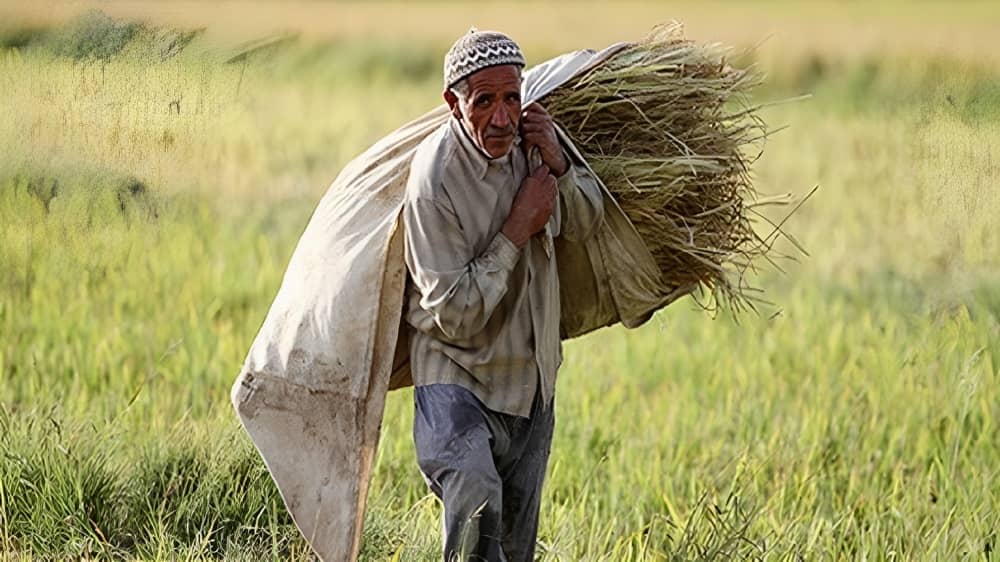
April 2023 saw the contentious confiscation of a staggering 18 million hectares of agricultural land in Iran. Even as many large plots of land were seized, countless smaller tracts belonging to individual farmers who personally tended to their fields were not spared.
Despite having longstanding ownership records bearing the testament of numerous generations, lands without documentation recognized by the ruling authorities were taken. The latest twist in this saga raises the question: Who are the real owners of these seized lands? Many have been earmarked for housing projects, with their true ownership still shrouded in mystery, leading to a surge of concerns.
Even state-run publications, which often toe the regime’s line, have raised eyebrows over these land seizures. A feature in the Hamdeli newspaper cautioned against the broader implications of the Housing Transformation Act. Hojat Varmaziyari, a respected academic and expert in agriculture, has stated that the proposed addition of 330,000 hectares for urban and village development would saddle the economy with a 3,400 trillion tomans expense. He pointed out that such an expenditure violates Article 76 of the Constitution, which mandates a clear funding source for such vast undertakings.
#Iran News in Brief
In a report dated May 29, the state-run newspaper Sharq exposed some information about the potential confiscation of Iran’s lands and water resources by the ruling clerics and #IRGCterrorists. https://t.co/rc22s4ytfz pic.twitter.com/SHrxy1hTh3— NCRI-FAC (@iran_policy) June 2, 2023
Moreover, Varmaziyari criticized the recent legitimization of encroachments on agricultural lands. He noted that the new law inadvertently grants legality to erstwhile illicit constructions. He emphasized, “In just half a decade, a staggering 330,000 hectares of invaluable agricultural land have been converted into urban zones.” Countering misconceptions that downplay the significance of these conversions, Varmaziyari clarified that Iran’s truly arable land amounts to just 1.2 million hectares. Thus, every hectare under contention is invaluable.
Highlighting potential solutions, Varmaziyari underscored the existence of approximately 478,000 vacant rural homes, questioning the rationale behind not utilizing this resource to meet housing requirements.
Regime Supreme Leader Ali Khamenei, banking on Article 44 of the Constitution, has previously appropriated vast sectors of Iran’s economy, benefiting institutions linked to him and the Revolutionary Guards. This “privatization process,” which began in the early 1990s, is in its concluding phase. Now, the focus has shifted to agricultural land.
Iran: Isfahan Uprising in Support of the Protesting Farmers #Iran #IranProtests https://t.co/jzxGhgjjGE
— NCRI-FAC (@iran_policy) November 19, 2021
A bold assertion by the regime claims that these farmlands, even those cultivated by individual farmers, are “national lands.” It’s projected that around half of the 18 million hectares are embroiled in ownership disputes. Despite most farmers possessing land deeds and documents passed down for generations, the regime is on a confiscation spree.
Presently, disputes involving the farmers concern over 60% of these 18 million hectares. The regime has committed to settling these disputes by year-end.This latest episode, mirroring the seizure of major industries, aims to centralize ownership under Khamenei and his associates. The move is anticipated to escalate the existing crisis, stirring social unrest in numerous provinces.

MEK Iran (follow us on Twitter and Facebook), Maryam Rajavi’s on her site, Twitter & Facebook, NCRI (Twitter & Facebook), and People’s Mojahedin Organization of Iran – MEK IRAN – YouTu
